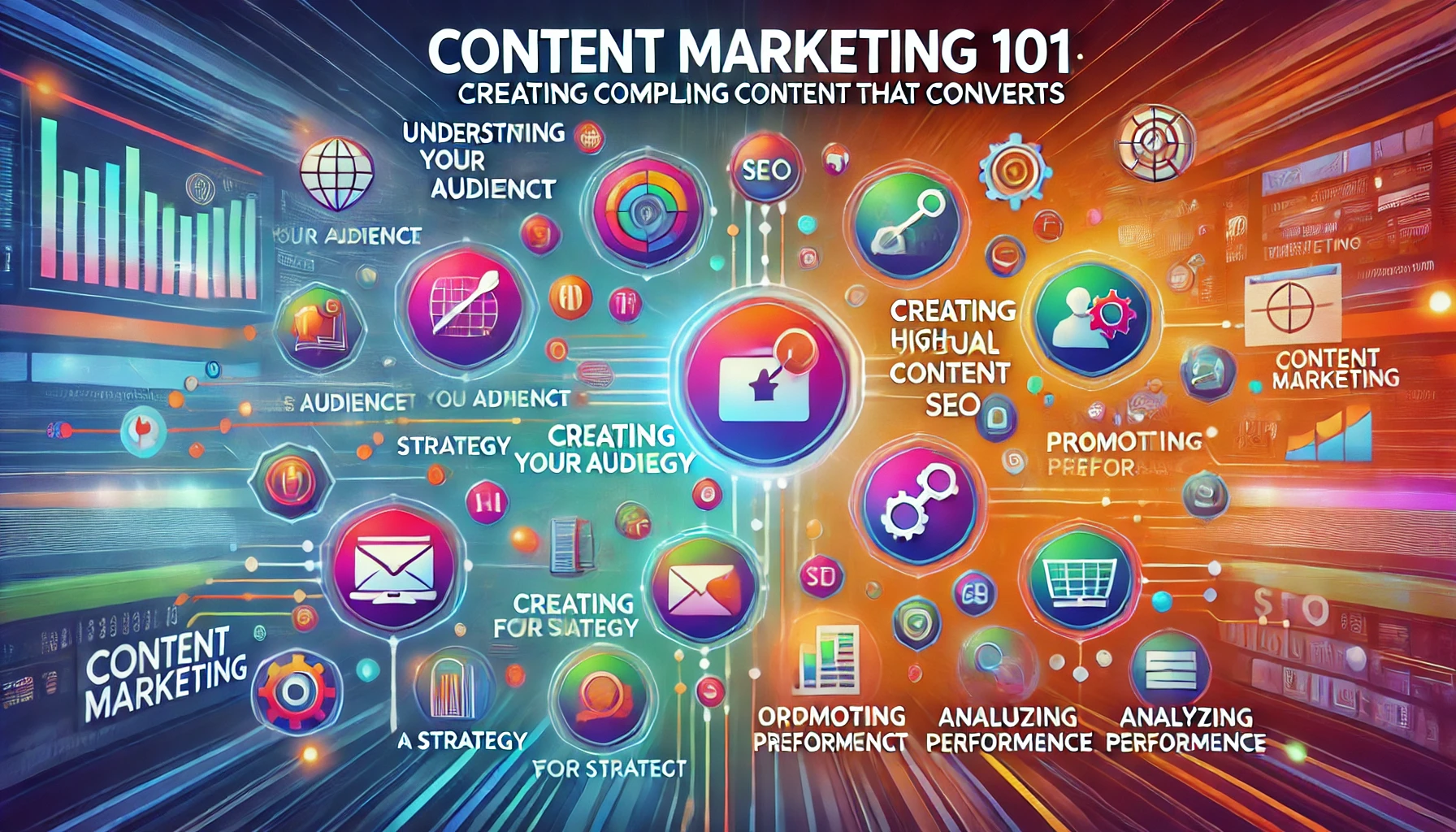Content Marketing 101: Creating Engaging Content That Converts
- Posted by Emily Brown (United Kingdom)
- Categories Technology
- Date July 2, 2024
Understanding Your Audience for Compelling Content
To create content that resonates and converts, you must first understand your audience. Knowing your audience allows you to tailor your content to their needs, preferences, and pain points.
- Identify Your Target Audience: Use tools like Google Analytics, social media insights, and customer surveys to gather data about your audience’s demographics, interests, and behaviors.
- Create Buyer Personas: Develop detailed personas that represent your ideal customers. Include information such as age, gender, occupation, challenges, and goals.
- Analyze Audience Behavior: Monitor your audience’s behavior to understand what type of content they engage with the most.
Crafting a Content Strategy That Converts
A well-defined content strategy serves as a roadmap for your content marketing efforts, ensuring consistency and alignment with your goals.
- Set Clear Objectives: Define what you want to achieve with your content marketing, such as increasing brand awareness, generating leads, or driving sales.
- Choose Content Types: Decide on the types of content you will create, such as blog posts, videos, infographics, ebooks, and podcasts.
- Develop a Content Calendar: Plan your content schedule to ensure consistent and timely delivery. Use tools like Trello or Asana to manage your calendar.
Creating High-Quality Content
High-quality content is the key to capturing your audience’s attention and driving conversions. Focus on providing value and addressing your audience’s needs.
- Use Compelling Headlines: Craft attention-grabbing headlines that entice readers to click and read more.
- Provide Value: Offer actionable insights, tips, and solutions to your audience’s problems. Ensure your content is informative and useful.
- Maintain Clarity and Readability: Write in a clear and concise manner. Use short paragraphs, bullet points, and subheadings to enhance readability.
Internal Link: For more tips on creating engaging content, check out our article on Social Media Marketing: Best Practices for Engagement and Growth.
Incorporating Visual Elements
Visual elements enhance your content by making it more engaging and easier to understand. They can also help convey complex information effectively.
- Use Images and Infographics: Incorporate high-quality images and infographics to illustrate your points and break up text.
- Create Videos: Produce videos to explain concepts, demonstrate products, or share customer testimonials.
- Design Visual Quotes: Use tools like Canva to create visually appealing quotes and shareable graphics.
Optimizing Content for SEO
Search engine optimization (SEO) is essential for ensuring your content reaches a wider audience and ranks well on search engines.
- Conduct Keyword Research: Identify relevant keywords that your audience is searching for. Use tools like Google Keyword Planner and SEMrush.
- Incorporate Keywords Naturally: Integrate your target keywords into the content naturally, including in headlines, subheadings, and body text.
- Optimize Meta Descriptions: Write compelling meta descriptions that include your target keywords and encourage clicks.
Promoting Your Content
Creating compelling content is only half the battle. You must also promote your content to reach your target audience and drive traffic.
- Leverage Social Media: Share your content on social media platforms to reach a broader audience. Use engaging visuals and hashtags to increase visibility.
- Utilize Email Marketing: Send your content to your email subscribers to keep them engaged and drive traffic to your website.
- Engage in Content Syndication: Partner with industry websites and blogs to republish your content and reach new audiences.
Analyzing Content Performance
Regularly analyzing your content performance helps you understand what works and what doesn’t, allowing you to refine your strategy.
- Track Key Metrics: Monitor metrics such as page views, engagement rates, conversion rates, and social shares to gauge your content’s effectiveness.
- Use Analytics Tools: Utilize tools like Google Analytics, HubSpot, and SEMrush to gather data and insights.
- Refine Your Strategy: Based on your analysis, make informed adjustments to your content strategy to improve performance.
Engaging with Your Audience
Engaging with your audience builds relationships and fosters loyalty. Responding to comments, questions, and feedback shows that you value your readers.
- Respond Promptly: Aim to respond to comments and questions quickly to show that you are attentive and responsive.
- Encourage Interaction: Ask questions, run polls, and invite feedback to encourage interaction and build a community.
- Show Appreciation: Acknowledge and appreciate your audience’s contributions and feedback.
External Link: To stay updated on the latest content marketing trends and strategies, visit Content Marketing Institute.
By following these steps, you can create compelling content that converts and drives meaningful results for your business. Focus on understanding your audience, crafting a solid content strategy, producing high-quality content, and promoting it effectively. Regularly analyze your performance and engage with your audience to build lasting relationships and achieve your content marketing goals. Embrace the power of content marketing to connect with your audience, provide value, and drive conversions.
To read more articles like this, visit: Regent Studies
You may also like




